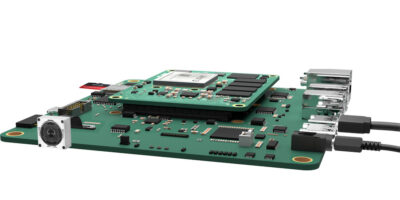Offering more than twice the AI processing performance of the Jetson Nano, Nvidia’s Jetson TX2 NX single board computer (SBC) is designed for mass-market articial intelligence (AI) platforms. The SBC is now available from Impulse Embedded. According to the industrial computing systems and solutions provider, the Jetson TX2 NX delivers the next step in AI performance for entry-level embedded and edge products.
It has the same form factor and is pin compatible with the Jetson Nano, but offers more than twice the AI processing performance at 1.33tera floating operations per second (TFlops) compared to 487GFlops.
The Nvidia Jetson TX2 NX SBC combines a dual-core Nvidia Denver 2 64-bit CPU, a quad-core Arm Cortex-A57 MPCore processor and a 256-core Pascal GPU that can operate at up to 1.3GHz. It also has 4Gbyte of 128-bit LPDDR4 memory and 16Gbyte of eMMC 5.1 flash storage. There is also PCI Express expansion, Gigabit Ethernet, a USB3.1 Gen 1 port and video output via HDMI or DisplayPort. The SBC is fully capable of encoding one 4K stream at 60frames per second in HEVC/H.265 or as many as 14 streams in 1080p at 30frames per second in HEVC/H.264.
The TX2 NX, like all Jetson modules and developers’ kits are supported by Nvidia’s JetPack software stack for deployment anywhere on any Jetson device.
Impulse Embedded’s sales director, Robert Plant, acknowledged that developing industrial AI computing can be “difficult, costly and time-consuming”. The company has embedded systems capabilities to help customers create reliable, repeatable and robust systems to meet budget and time constraints. “With our team of in-house engineers and specialists, all with decades of experience, we can offer fully deployable embedded edge AI computing solutions straight out of the box,” he said.







